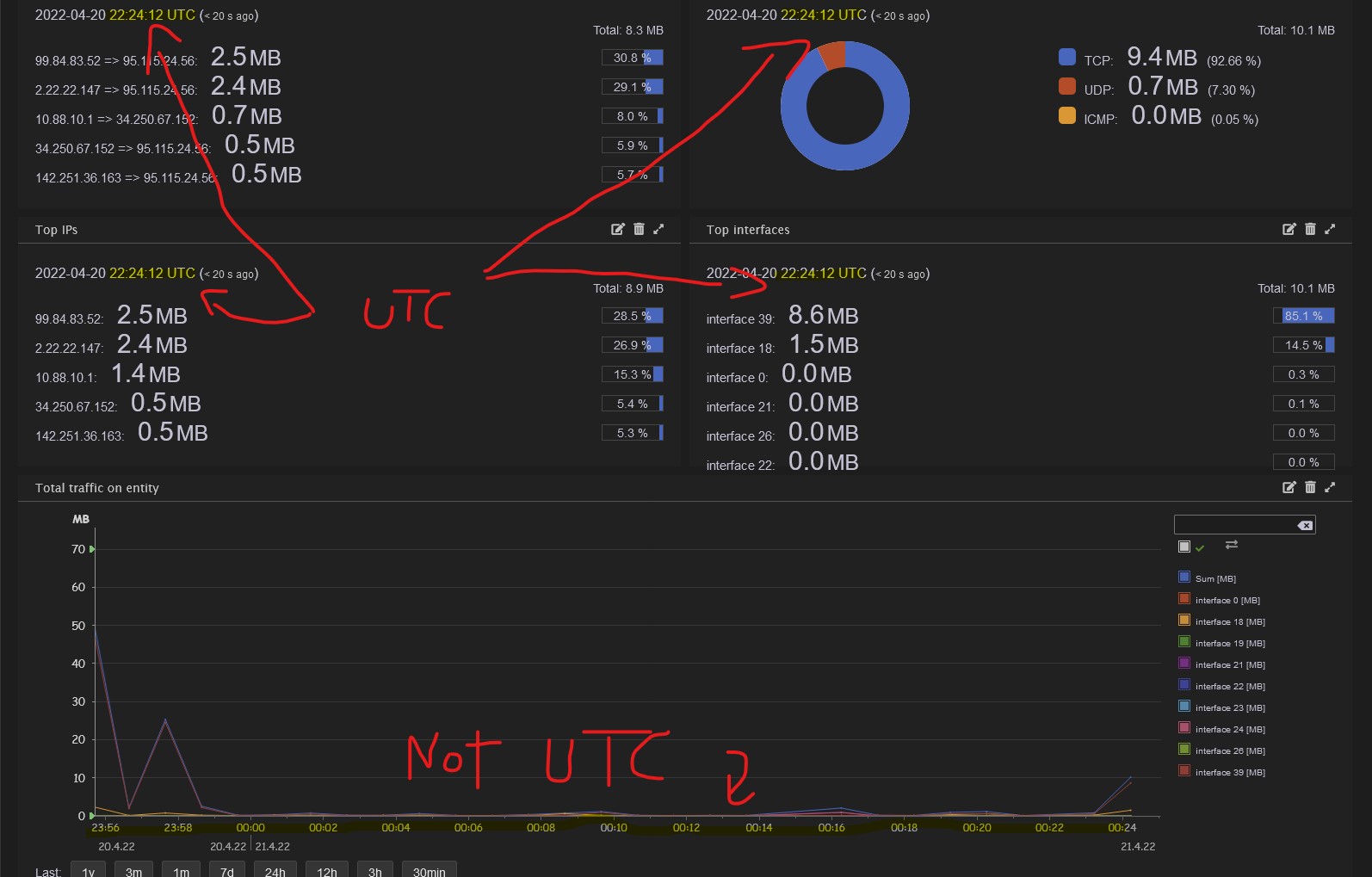- demo: https://app.grafolean.com/ (use credentials
demo/demo) - self-hosted or hosted service
- API-first
- built-in or remote agents ("bots")
- UI-controlled agents (bots) for NetFlow, ICMP ping and SNMP (SNMPv1, SNMPv2 and SNMPv3)
- uses PostgreSQL / TimescaleDB as data storage (easy data maintenance)
- granular permissions model
- support for custom dashboard widgets via plugins
Before starting, make sure that both Docker (installation instructions) and Docker Compose (installation instructions) are installed.
-
save install/docker-compose.yml to a local file:
$ curl https://raw.githubusercontent.com/grafolean/grafolean/master/install/docker-compose.yml > docker-compose.ymlTrying to run Grafolean on Raspberry PI? Read more...
The default build is for
x86architecture only. If you would like to run Grafolean on an ARM (Raspberry Pi), there is a build available for it, but it is not yet included in the default branch. Use this command to fetchdocker-compose.ymlinstead:$ curl https://raw.githubusercontent.com/grafolean/grafolean/feature/multi-arch/install/docker-compose.yml > docker-compose.ymlEverything else works the same.
Note that constant writing to SD cards (which is what databases do) is in general not a good idea and might cause them to fail. If you have an option, consider using an SSD drive.
-
save .env.example to a local file and rename it to
.env:$ curl https://raw.githubusercontent.com/grafolean/grafolean/master/install/.env.example > .env -
edit
.env, for example withnano:$ nano .envand change the settings:
- mandatory:
EXTERNAL_HOSTNAME(set to the IP/hostname of the server as seen from the outside - for examplegrafolean.example.comor198.51.100.12), - optional but recommended: DB admin credentials and the path where the DB data will be saved locally (
/grafolean-db/by default).
- mandatory:
-
run:
$ docker-compose up -d -
point your browser to
http://<IP or domain>/(where<IP or domain>should be the same asEXTERNAL_HOSTNAMEin step 3)
Congratulations, you are done! 🚀
If you wish to setup HTTPS, see doc/HOWTO-HTTPS.md for instructions.
$ docker-compose pull
$ docker-compose down
$ docker-compose up -d
You can send data to Grafolean from your own scripts ("custom bots") or you can use one of the existing bots, which can even be configured from within the Grafolean (like ICMP ping, SNMP or Netflow - see Grafolean User Guide).
When you just want to send values to Grafolean, create a custom bot (via UI) and obtain its token. Then you can use a regular POST request to send values:
$ curl -X POST 'https://app.grafolean.com/api/accounts/1/values/?p=myhouse.livingroom.humidity&v=57.3&b=<BotAPIToken>'The values can now be shown through dashboards.
User Guide explains the core concepts and guides you further. See also backend/API.md for more info on API.
- User Guide - core concepts and first steps
- NetFlow Guide - step-by-step NetFlow monitoring setup guide
- HTTPS - configuring Grafolean to use SSL/TLS
- API Guide
- Development Guide
We do our best to make sure no 3rd party receives any data from your installation of Grafolean or from your users.
Frontend uses Content Security Policy (CSP) to disallow loading of resources from anywhere except from the host itself. The limit also applies to external plugins.
The backend should make no requests to the external services, except:
https://app.grafolean.com/- reporting telemetry if enabled (see below), andhttps://github.com/- downloading external plugins when admin installs / upgrades them.
Note that this list might be updated in the future, however, we will make an effort to avoid any tracking that is not strictly necessary.
Telemetry can be disabled by setting TELEMETRY=none in the .env file when starting Grafolean (as indicated in .env.example). The default telemetry is basic and allows us to determine active installations of the app (app start, daily "ping"). We would appreciate if you leave the telemetry enabled as it helps us to focus our efforts on what matters the most, but we understand if you have concerns about it and decide to turn it off. We will not allow 3rd parties access to telemetry data, but we might publish aggregated data through public channels (blogs,...).
This software is free to use for any purpose, to inspect, modify and share, except to sell to third parties.
License is Commons Clause license (on top of Apache 2.0), which means that source is available and you can use it free-of-charge forever (both non-commercially and commercially), modify it and share modifications. The license limits the ability to sell Grafolean to third parties (for example as product, offering support,...), as you would need a commercial license for that (not yet available, contact us if interested). Open an issue or ask directly if in doubt.











